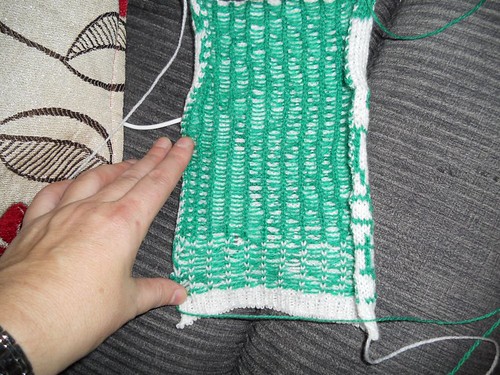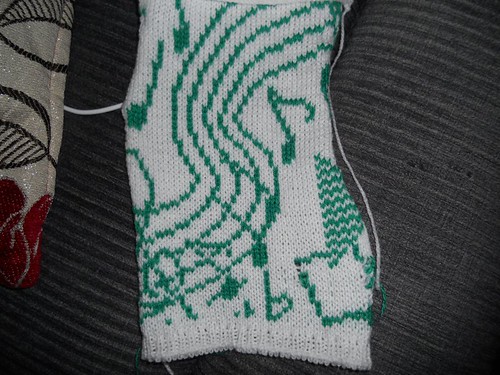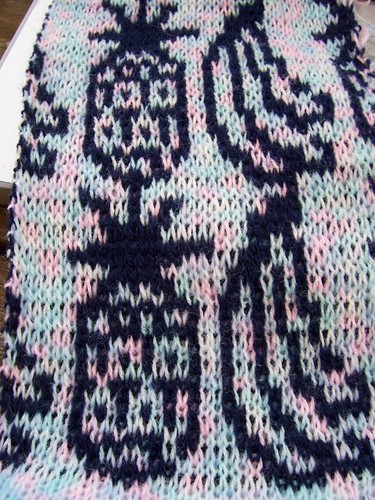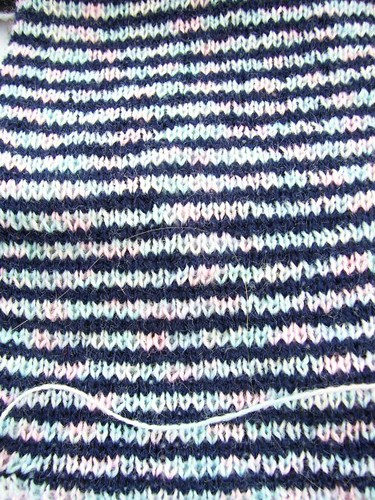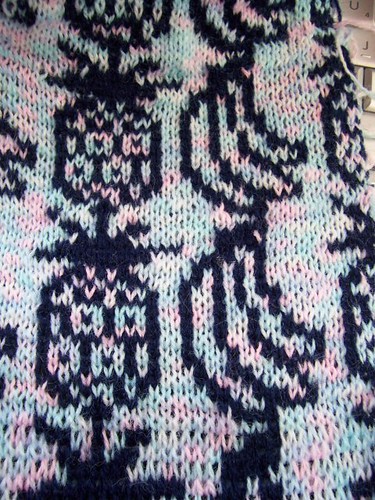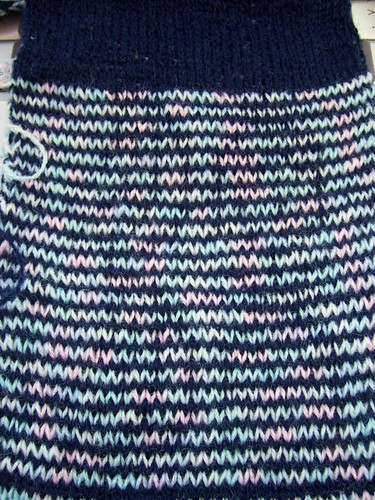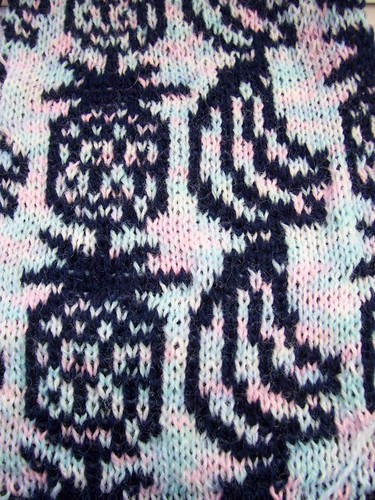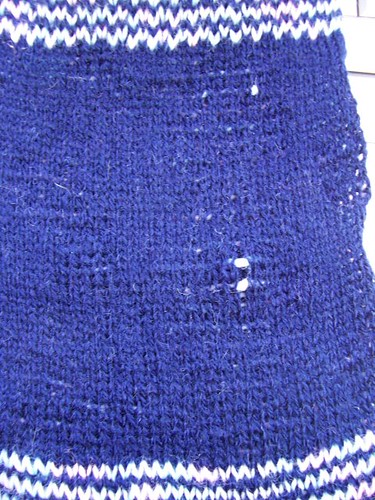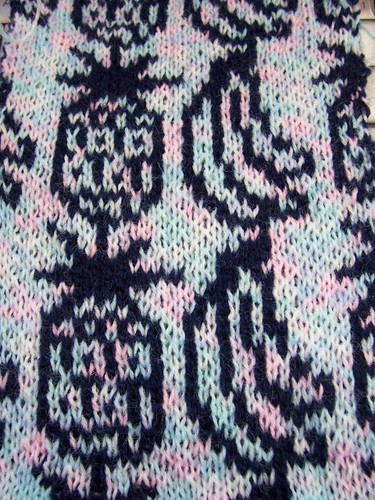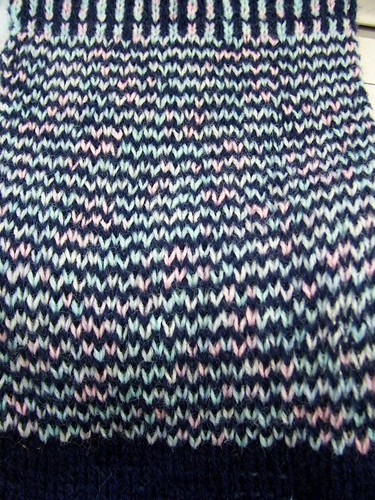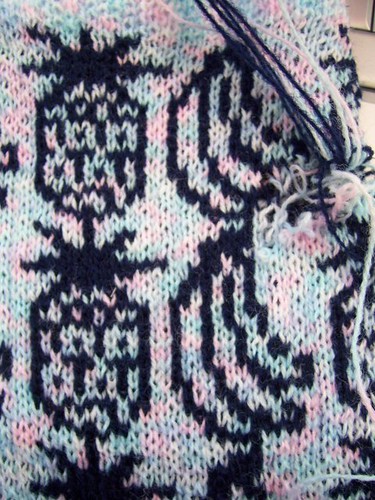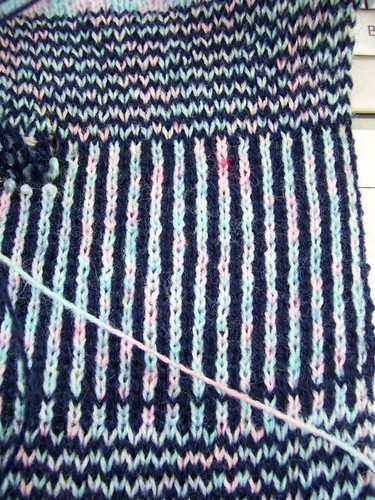I realised I never actually shared the pattern for this. It makes a scarf approximately 23cm by 176cm long. A motor is recommended, otherwise maybe work it in sections to give yourself a break, it's quite the workout!
Yarn: 2 ends of 3ply or equivalent in two colours
Machine: Passap E6000 or Duomatic
Program your E6000 as follows:
Pattern A: DBJ technique*
Pattern B: Desired stitch design, DBJ technique as before
Pattern C: DBJ technique same as pattern A
DBJ techniques: some time ago, I knitted a big swatch of techniques 180 to 194, an interesting exercise to see how different techniques alter the pattern's proportions and appearance. For this scarf I like tech 180 (birdseye backing) or tech 182, vertically striped backing. You will need the back bed pushers in work for this technique also. I found a plain backing had a tendancy to create holes / pockets in the front design, exactly like the issue with single motif knitting if the motif is not "bound in" with yarn of the same colour, so single colour backing techniques are to be avoided unless the stitch design is an overall random one with no large areas of contrast colour - in other words, don't use tech 181. If you want a larger, more holey scarf, you might also try tech 186, fantasy fairisle, which is N/KX - there's a faint reversible effect with this, but I feel it's overrated myself!
Tech 180 = BX, both arrows in on back bed / LX (slip) on front bed (BX for Duomatics)
Tech 182 = BX, left arrow in, on back bed / LX (slip) on front bed (BX for Duomatics)
Cast on 2 over 60 sts - this is the tubular K/K or full needle rib cast on, so handle must be down. You should have both end needles on the back bed in work, so 61 needles on the back bed - this is to ensure that the edges are correctly sealed up. When casting on, the first row is ss 2/2, circular rows ss 3/3, final row is ss 5/5
Knit 8 rows pattern A ss5/5
Knit 1600 rows pattern B (first two rows are the background colour, second pair are the contrast colour ie the black squares in the pattern book). So here colour 1 is black, colour 2 is white.
Knit 7 rows pattern C
Set locks to N/N and ss 8/8 - pulling down on the knitting as you knit this loose row. Don't let go, whilst changing to waste yarn or the other colour and resetting to ss5/5, knit 8 rows of waste yarn then scrap off. I use the latch tool to latch through the last row before unravelling the waste yarn. Weave in the ends and you're done.
Although you could knit the first and last sections in plain K/K, I find this is thinner and tends to flare out a bit. Knitting sections A and C in self-coloured DBJ maintains the same width and density of the fabric.


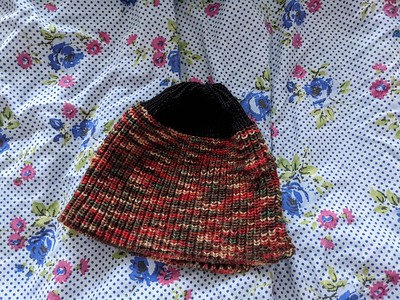

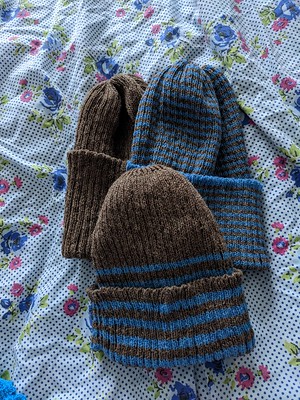
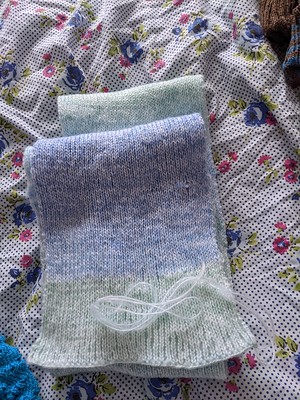
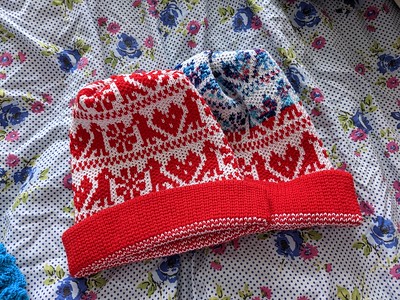
 energetic
energetic


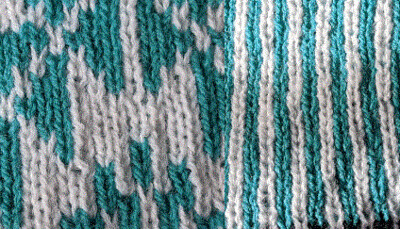

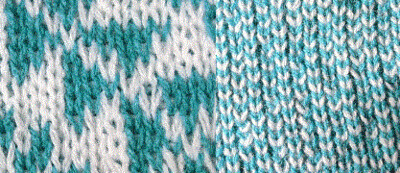

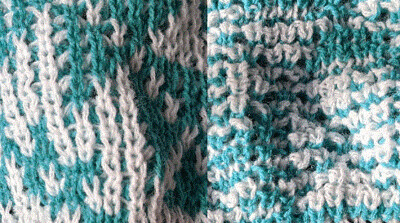
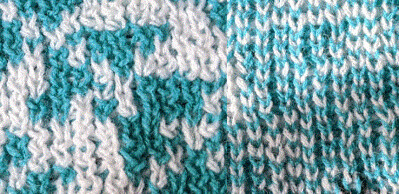


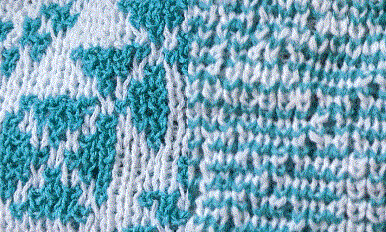




 amused
amused 




 loved
loved 